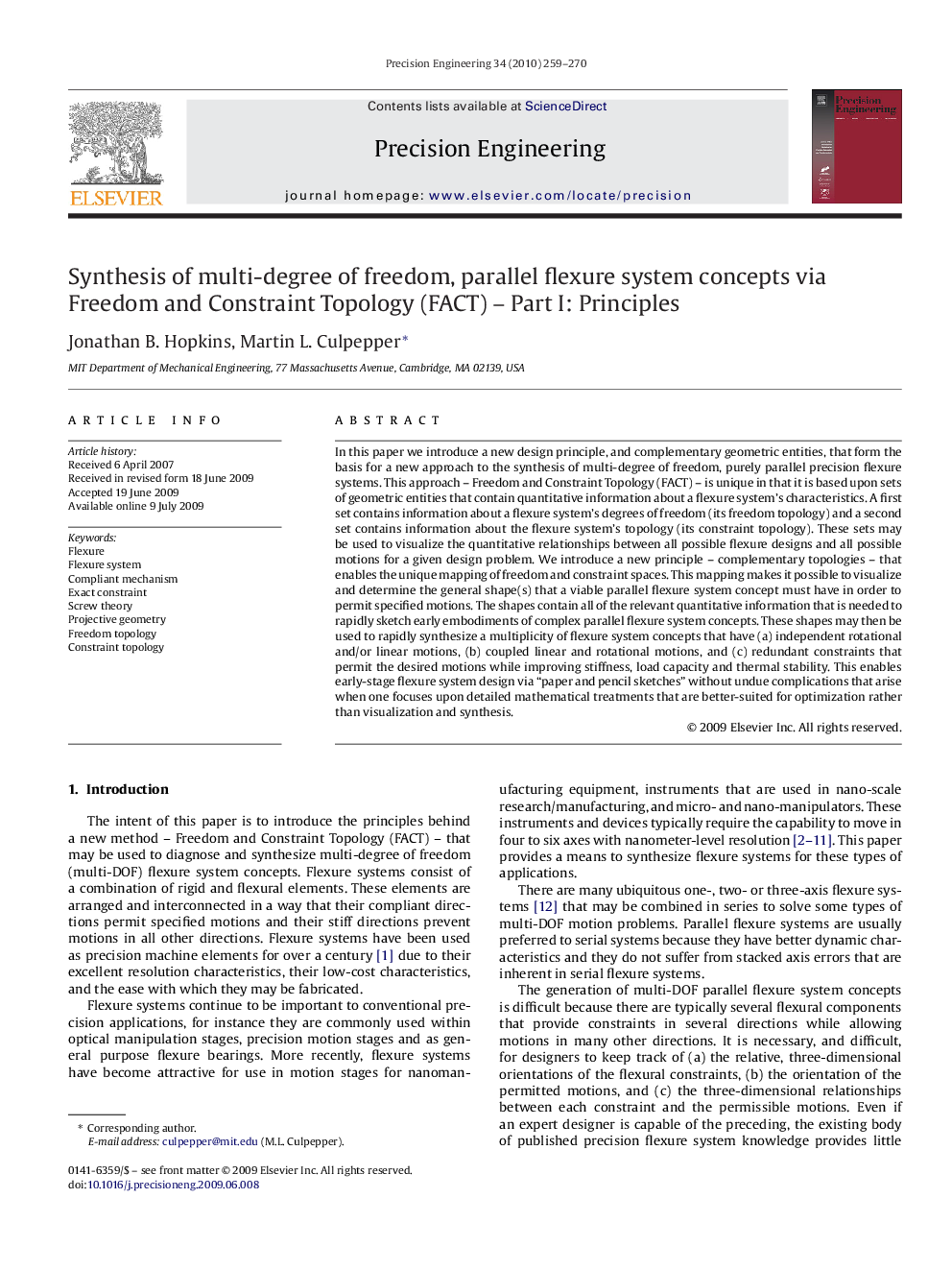| کد مقاله | کد نشریه | سال انتشار | مقاله انگلیسی | نسخه تمام متن |
|---|---|---|---|---|
| 806651 | 905384 | 2010 | 12 صفحه PDF | دانلود رایگان |

In this paper we introduce a new design principle, and complementary geometric entities, that form the basis for a new approach to the synthesis of multi-degree of freedom, purely parallel precision flexure systems. This approach – Freedom and Constraint Topology (FACT) – is unique in that it is based upon sets of geometric entities that contain quantitative information about a flexure system's characteristics. A first set contains information about a flexure system's degrees of freedom (its freedom topology) and a second set contains information about the flexure system's topology (its constraint topology). These sets may be used to visualize the quantitative relationships between all possible flexure designs and all possible motions for a given design problem. We introduce a new principle – complementary topologies – that enables the unique mapping of freedom and constraint spaces. This mapping makes it possible to visualize and determine the general shape(s) that a viable parallel flexure system concept must have in order to permit specified motions. The shapes contain all of the relevant quantitative information that is needed to rapidly sketch early embodiments of complex parallel flexure system concepts. These shapes may then be used to rapidly synthesize a multiplicity of flexure system concepts that have (a) independent rotational and/or linear motions, (b) coupled linear and rotational motions, and (c) redundant constraints that permit the desired motions while improving stiffness, load capacity and thermal stability. This enables early-stage flexure system design via “paper and pencil sketches” without undue complications that arise when one focuses upon detailed mathematical treatments that are better-suited for optimization rather than visualization and synthesis.
Journal: Precision Engineering - Volume 34, Issue 2, April 2010, Pages 259–270